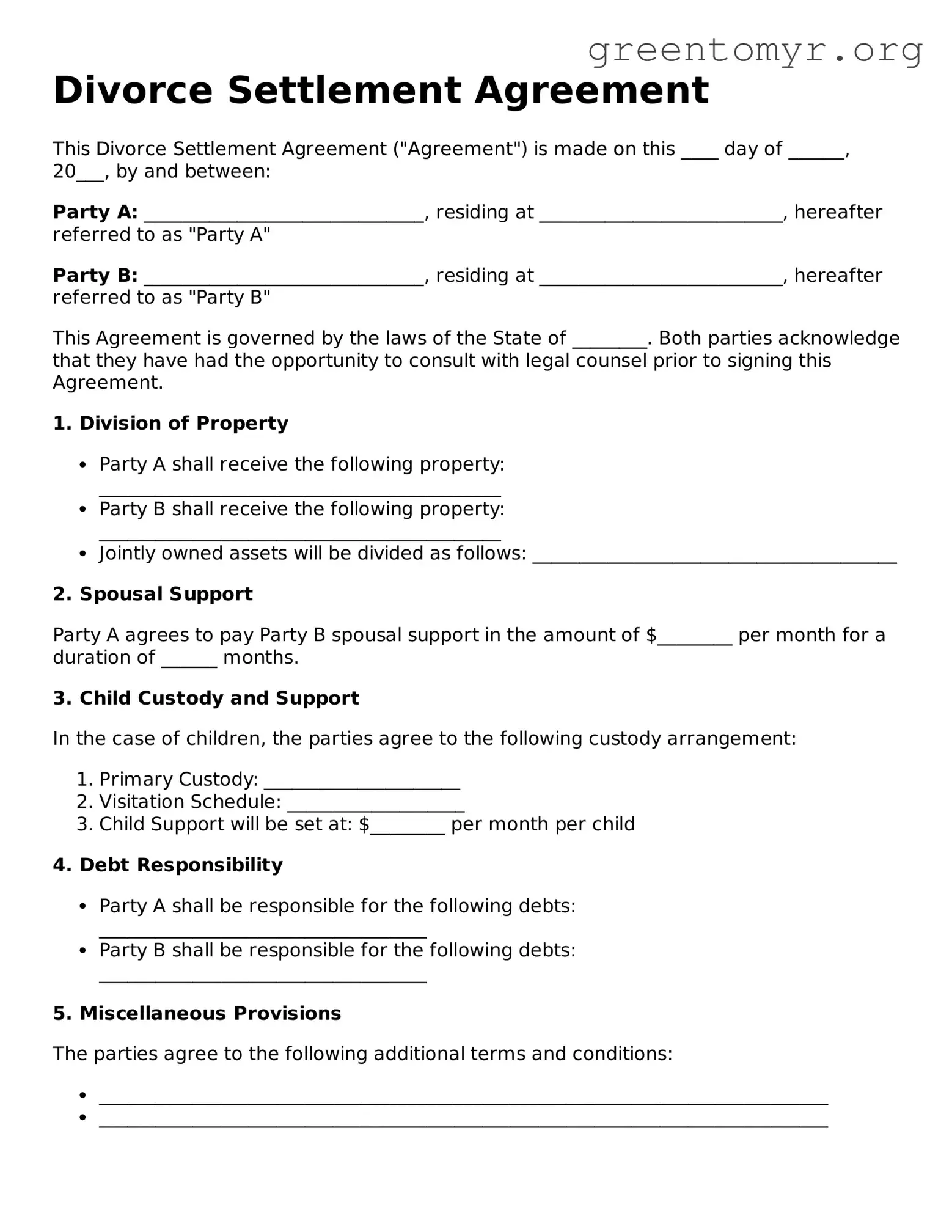Divorce Settlement Agreement
This Divorce Settlement Agreement ("Agreement") is made on this ____ day of ______, 20___, by and between:
Party A: ______________________________, residing at __________________________, hereafter referred to as "Party A"
Party B: ______________________________, residing at __________________________, hereafter referred to as "Party B"
This Agreement is governed by the laws of the State of ________. Both parties acknowledge that they have had the opportunity to consult with legal counsel prior to signing this Agreement.
1. Division of Property
- Party A shall receive the following property: ___________________________________________
- Party B shall receive the following property: ___________________________________________
- Jointly owned assets will be divided as follows: _______________________________________
2. Spousal Support
Party A agrees to pay Party B spousal support in the amount of $________ per month for a duration of ______ months.
3. Child Custody and Support
In the case of children, the parties agree to the following custody arrangement:
- Primary Custody: _____________________
- Visitation Schedule: ___________________
- Child Support will be set at: $________ per month per child
4. Debt Responsibility
- Party A shall be responsible for the following debts: ___________________________________
- Party B shall be responsible for the following debts: ___________________________________
5. Miscellaneous Provisions
The parties agree to the following additional terms and conditions:
- ______________________________________________________________________________
- ______________________________________________________________________________
By signing below, both parties acknowledge that they understand and agree to the terms of this Divorce Settlement Agreement.
Party A Signature: ______________________________________ Date: ______________
Party B Signature: ______________________________________ Date: ______________
This Agreement is executed as a formal document and serves as a binding contract between the parties. It is advisable to maintain copies for your records.
